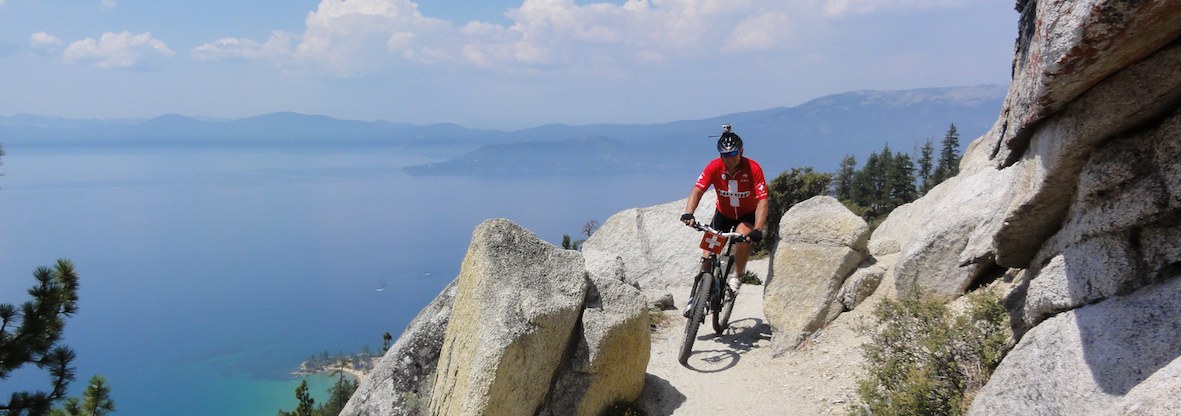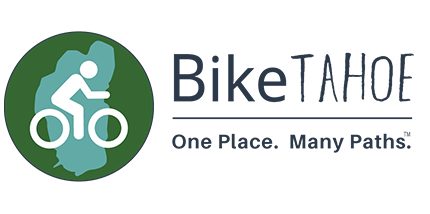Tahoe Biking Tips

Here is a general set of biking tips to help you make the most of your bicycling experience in the Tahoe region.
Lake Tahoe Biking Season
Typically, Tahoe bicycling season runs from late May to late October. This is dependent on the amount of snowfall or the lack of. (There are times when we can ride into December). July and August are peak tourists’ months with a lot of traffic on the highways– cars, RVs, boats and trailers, and caution is needed. If riding on the highways during peak tourism months it is best to get an early start in the day before the traffic increases after 12:00 PM.
- Altitude: The surface of the Lake is already at 6,224 feet above sea level. And most bike rides are higher than that with some rides near or higher than 8,000 feet.
- Adaptation: Start slow for your first ride so your body can adjust to the higher elevation.
- Warm-up: Ride about a mile on flat terrain before starting a climb – this will oxygenate your body (aerobic) and minimize lactic acid build up in the legs (anaerobic) when climbing.
- Self-awareness: Notice if you get light headed, dizzy, headache or nausea as these can be symptoms of Altitude Sickness. Should you experience these symptoms, stop and get off your bike, drink lots of water and rest until you feel better. If you don’t feel better to ride, then seek assistance and do not ride your bike.
Low Humidity – It’s Dry
The combination of high altitude, high pressure, and near a desert make it very dry in the Tahoe area.
- Drink lots of water. Drinking water is essential in the high altitude to minimize the risk of fatigue, dehydration, cramping, and Altitude Sickness.
- Drink water before you start your ride. If your ride is less than an hour in length your body has sufficient water storage. If your ride is more than an hour in length then its best to take a bicycle water bottle or a hydration back pack and drink every 15 minutes during your ride.
Intense Sunshine
The sun can be intense particularly between the hours of 12:00 – 4:00PM.
- Deceptive Temperatures. Due to altitude and dryness the temperatures are deceiving. 80 degrees here is more intense than 80 degrees in lower elevations with humidity.
- Apply Sunscreen. You can easily get a sun burn and damage your skin here.
- Wear light colored clothing. Light colored clothing can help you feel cooler during mid day.
Changing Weather
The Sierra Nevada mountain range is noted for its ability to rapidly change the weather conditions. It can be high 80 degrees midday and a hail storm comes in by 3:00PM and drops to 60 degrees.
- Check Weather Forecast. Before heading out on your ride check the weather forecast for the day. Click Here to view extended area forecast from NOAA.
- Layer Technique. Have a light windbreaker with you in the event of possibility rain showers or cooler temps.
Riding Around the Lake – Clockwise
If you intend to ride around the Lake it is advised to travel in a clockwise direction or on the Lake side of the roadway. In this way, motorists looking at the Lake’s beauty will see you – you will appear between them and the Lake. Plus its two miles shorter.
